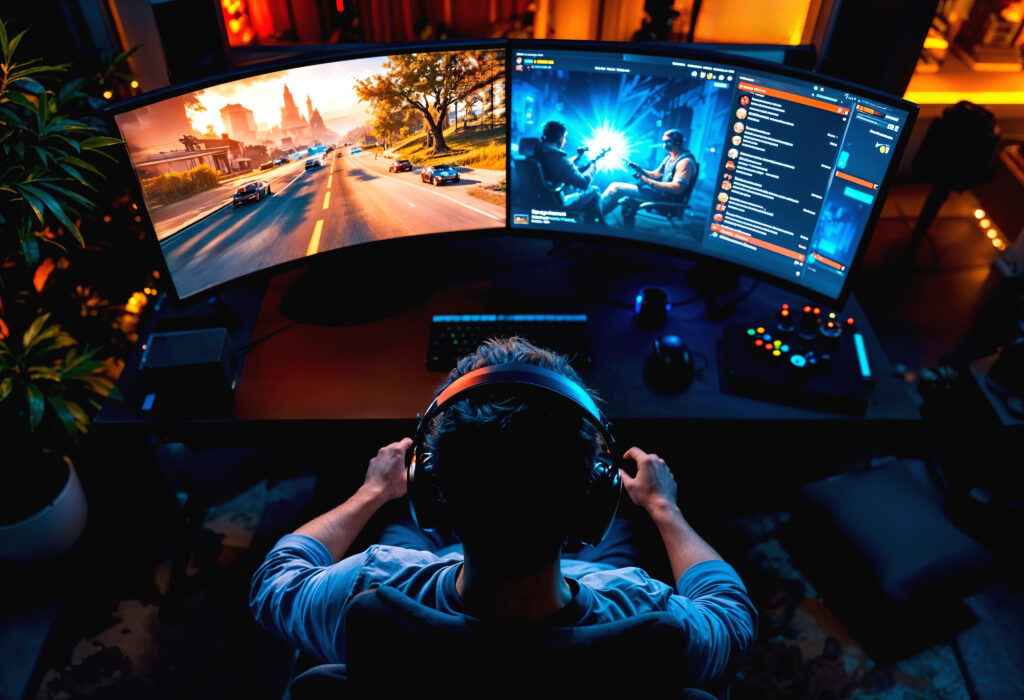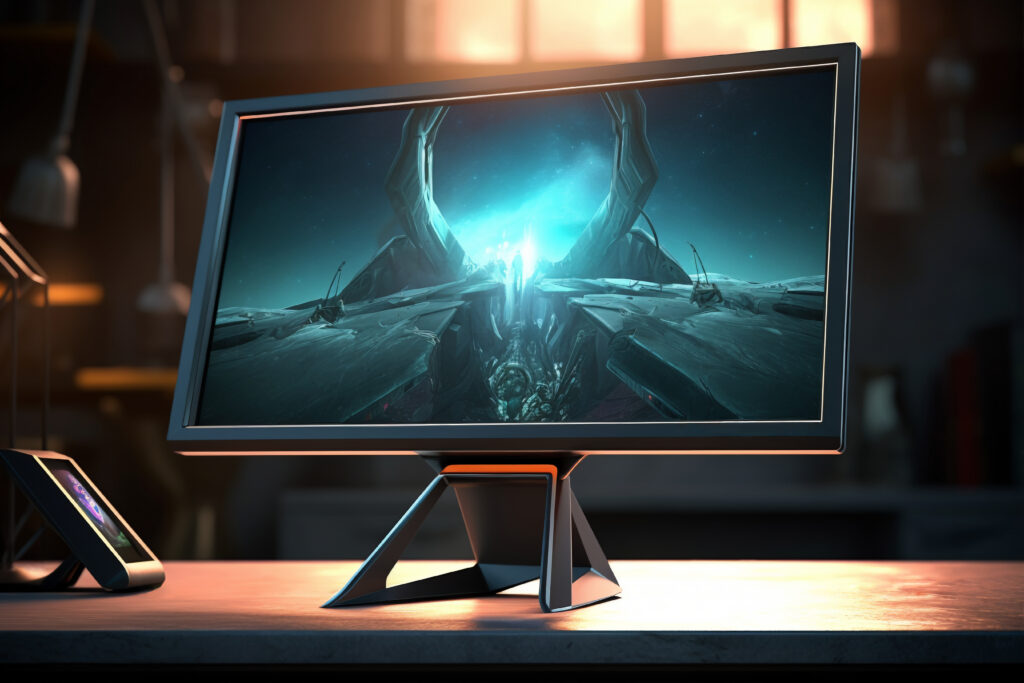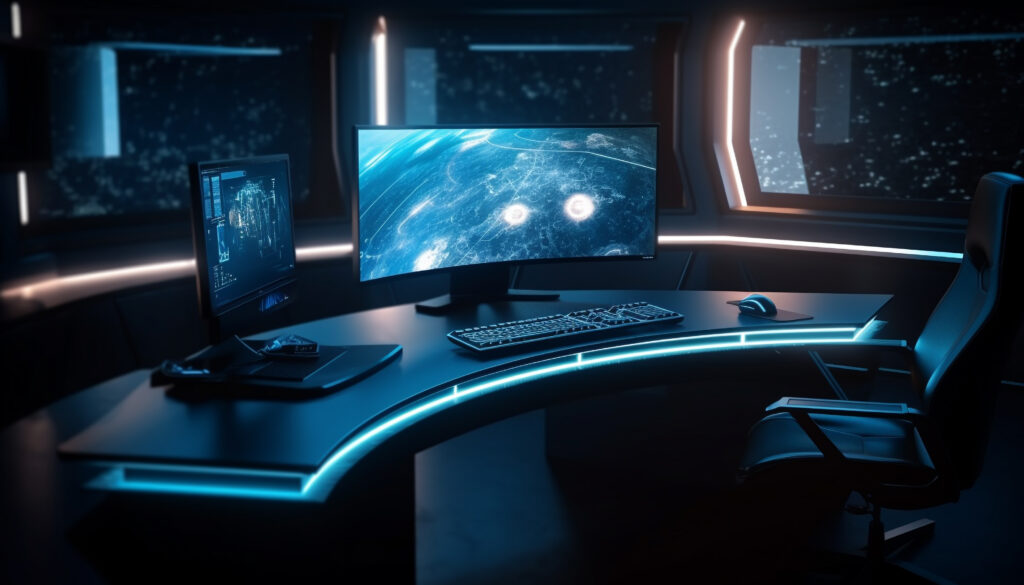Looking for the best OLED gaming monitor to upgrade your setup? OLED displays are taking gaming to a whole new level with perfect blacks, rich colors, and ultra-fast response times. In this guide, we’ll explain everything in simple terms, show you why OLED is becoming the top choice, and help you choose the right monitor without overpaying.
What Is an OLED Gaming Monitor? (Explained Simply)
OLED stands for Organic Light Emitting Diode. Unlike normal monitors that use a backlight, every pixel in an OLED screen produces its own light. This means when a scene goes dark, pixels can turn off completely, giving true blacks and incredible contrast.
For gamers, this makes dark scenes in horror games, night missions, or space battles look far more realistic. Colors pop, shadows look deep, and motion feels incredibly smooth.
Why Gamers Love OLED Monitors
Perfect Contrast for Every Game
OLED screens don’t glow gray in dark areas like LCD screens. They stay truly black, making bright objects shine even more.
Ultra-Fast Response Times
Most OLED gaming monitors have 0.1 ms response times. That’s almost instant — so no ghosting or blurry trails when things move fast.
Smooth High Refresh Rates
Modern OLED monitors offer 120Hz, 144Hz, or even 240Hz, perfect for both casual gamers and competitive esports players.
Beautiful HDR Performance
Because OLED pixels control brightness individually, HDR effects are stunning. Explosions, sunlight, and glowing lights look lifelike.
Things to Consider Before Buying
Price
OLED monitors are premium products. While prices are dropping, they still cost more than traditional gaming monitors.
Burn-In Concerns
Static images, like HUD elements or maps, can leave faint marks if left onscreen for hours. Many new OLEDs have pixel shifting or screen refresh tools to prevent this.
Brightness Levels
OLED monitors are usually bright enough for indoor gaming, but some high-end LED monitors can go brighter. If your room is sunlit all day, consider this factor.

How to Choose the Best OLED Gaming Monitor
Decide Your Gaming Style
- Fast shooters (Valorant, Call of Duty): Look for high refresh rate (240Hz) OLED monitors.
- Story-driven games (Cyberpunk 2077, Witcher): Prioritize color accuracy and HDR over raw speed.
Pick the Right Resolution
- 1440p OLED: A great balance of visuals and performance — works with mid-range GPUs.
- 4K OLED: Ultra sharp, but requires a strong graphics card to keep up.
Choose the Ideal Screen Size
- 27-inch: Great for competitive gamers.
- 34-inch ultrawide: Perfect for immersive open-world and cinematic games.
Real Examples of the Best OLED Gaming Monitors
LG UltraGear OLED Series
Known for excellent color, speed, and G-Sync/FreeSync support. A favorite among PC gamers.
Alienware QD-OLED Monitors
Models like AW3423DWF combine OLED with quantum dots for brighter, more vibrant colors. Ideal for ultrawide setups.
ASUS ROG Swift OLED
Built for esports — lightning fast, with excellent cooling to protect against burn-in.
OLED vs Mini-LED: Which Is Better?
Mini-LED monitors are bright and durable, using thousands of tiny LEDs for improved contrast. But even the best Mini-LEDs can’t match OLED’s perfect black levels.
- OLED: Best for cinematic visuals and deep contrast.
- Mini-LED: Best for very bright rooms and longer durability.
Future of OLED Gaming Monitors
OLED gaming monitors are becoming more affordable and more advanced. New models with 360Hz refresh rates and hybrid QD-OLED panels are arriving. Within a few years, OLED may become the default standard for high-end gaming.

Conclusion
The best OLED gaming monitor offers unmatched contrast, color, and speed. Whether you’re into competitive shooters or cinematic adventures, OLED displays deliver visuals that feel alive. If you choose the right size, refresh rate, and resolution, an OLED monitor will transform your gaming experience for years to come.
FAQs
1. Are OLED gaming monitors good for everyday use?
Yes, they work great for gaming, streaming, and productivity, especially with anti-burn-in features.
2. Do OLED monitors last long?
Modern OLEDs are designed for long life, especially with pixel refresh tools to prevent burn-in.
3. Is 4K OLED better than 1440p OLED?
4K looks sharper, but requires a powerful GPU. 1440p is easier to run smoothly.
4. Can OLED monitors be used for consoles like PS5 or Xbox Series X?
Absolutely — they support HDMI 2.1 for high refresh rates and HDR gaming on consoles.
5. Which brand makes the best OLED gaming monitor?
LG, Alienware, and ASUS are currently leading the market with top-performing OLED models.
Read Also : Xbox ROG Ally X: The Ultimate Portable Gaming Revolution

